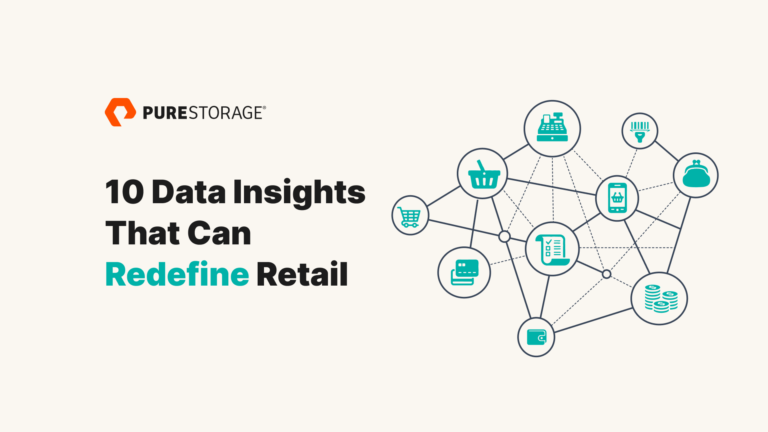The retail industry has undergone massive changes as it was forced to hurriedly implement digital transformation within weeks or months instead of original plans that stretched over several years.
E-commerce exploded as people all over the world went into quarantine. Another significant impact on the retail industry has been the rise of social influencers. While the trend had emerged and begun to grow before the global pandemic, it went into overdrive when the vast majority of shoppers turned to social media as an outlet for their stress, boredom, or anxiety over being stuck at home. Today, 71% of consumers say they’re more likely to buy something because of a social influencer.
With this comes the challenge of predicting and preparing for seasonal fluctuations in business, as well as unexpected bursts that can occur at any time. Even the slightest slowdown in your website performance can mean lost sales and disgruntled customers. More retailers are also prioritizing ESG initiatives across the product development lifecycle and operations.
Learn more: The State of Retail IT and Digital Transformation
Retailers with brick-and-mortar stores are being driven to use advanced technologies to differentiate themselves, too. Internet of things (IoT) devices and sensors, as well as other edge computing tools allow retailers to offer in-store features such as smart shelves with dynamic pricing displays, augmented or virtual reality capabilities, or smart beacons that detect where customers are in the store and alert them to relevant specials.
While all of this is greatly improving the customer experience, it’s also generating vast amounts of data to process, analyze, and store. Success—and survival—hinges on businesses finding ways to gain an edge. Today, that means properly managing, accessing, and analyzing ever-growing volumes of data to discover the hidden insights—and value—that lie within it.
Resolving the Challenges of Unstructured Data
One obstacle to unlocking that value is the unstructured nature of the data. According to IDC, 80% of an organization’s data will be unstructured by 2025. Unlike structured data, which is easily organized (think point-of-sale or inventory data), unstructured data is tough to organize, manage, and search (think call center transcripts, hashtag mentions, or online customer reviews). And that makes it even harder to analyze.
If you can’t analyze your unstructured data, it’s no use to you. If you can analyze it, you open a new world of possibilities:
- Understand why a product or service isn’t selling well, by analyzing customer reviews and pinpointing keywords that give clues to the issue.
- Drive sustainability initiatives across operations and the supply chain. Having the right data to power analytics, AI/ML, and blockchain can all improve decision making and enable sustainability goals.
- Find out what customers really think of your business, so you can quickly and effectively address problems before they escalate.
- Empower quicker decision-making across the enterprise, thanks to a deeper understanding of customer behavior and challenges faced by each department.
- Pinpoint the most successful (and unsuccessful) marketing initiatives, which ultimately help you spend money on what really works.
- Boost customer acquisition and loyalty by using insights to deliver ultra-personalized experiences when and where they matter most. Identify high-value customers and capitalize on their behaviors by reaching them in the most effective ways.
- Optimize the supply chain and operations by identifying bottlenecks and process breakdowns, and tracking the movement of products inside stores and in transit.
- Detect and prevent fraud, such as the use of stolen credit cards or in-store reimbursement for the return of items that were stolen, not purchased.
- Make pricing competitive and dynamic, through real-time data about similar products on competitors’ websites, etc.
- More accurately forecast demand and sales volume, despite wide seasonal fluctuations and ever-changing customer preferences.
Analyzing Retail Data with AI and Machine Learning
Artificial intelligence (AI) and machine learning (ML) have revolutionized data analytics. These technologies can parse data from many different sources, integrate it all together to find correlations no human operator could hope to discover and deliver often surprising insights into an organization’s processes, people, and systems.
In IDC’s Retail Digital Transformation (DX) Infrastructure 2021 Investment Guide, retailers named their top three infrastructure technology initiatives of 2020. IoT was the number one technology initiative cited, with augmented reality (AR) and mobile apps/devices following closely behind. All of those initiatives, which retailers consider vital to their continuing success, generate a lot of data. And most of it is unstructured.
Where retailers spend their AI/ML dollars matters. In the same IDC report mentioned above, retailers laid out their strategy of how they’re managing their AI/ML budgets: Most of it (nearly 40%) is going to AI software applications and platforms.
How to Harness Retail’s Unstructured Data for Insights
The amazing potential to transform your retail organization relies on finding the right technology to unlock the value of unstructured data. Legacy infrastructure can’t provide that largely because it’s highly siloed and separates storage into files and objects. With the right data storage solution, you can accommodate shoppers seamlessly, even through the wildest spikes in demand.
It requires a storage platform that makes it simple and efficient to store, access, manage, and analyze vast amounts of unstructured data. Explore Pure FlashBladeⓇ, a Unified Fast File and Object (UFFO) platform that’s powerful enough to handle even large-scale analytics and AI/machine learning workloads.
Download the paper to learn more: Harnessing Unstructured Data is Critical for Business Success
![]()







